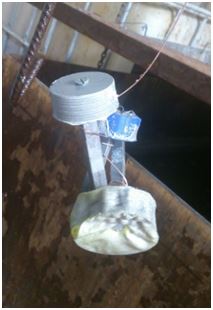Using 3D Printing to Manufacture Tools that are Resistant to Chemical Attacks
DESCRIPTION
Nationally recognized industrial coatings company provides chemical coatings for industrial parts that are primed and projected before being dried in an oven. There are 200 positions used as part of the priming process to pick up the parts. The whole process is automatic with just a single operator to deposit and remove the parts.
STARTING POINTS
• If a customer wishes to coat a piece, they must design a picking tool adjusted to the part being coated in terms of shape, material and size.
• In most cases, said picking tools are manufactured using injection moulding by an external company and are made with elastomers-based (rubbers) materials, since a rigid material would damage the part being coated.
• The tools must be able to withstand 90ºC for 30 minutes without becoming damaged. This is the temperature at which the coating is dried in the drying tunnel.
• Once the piece has been coated, the tools should be cleaned with a methylene chloride-based paint stripper.

CURRENT ISSUES
• Manufacturing costs of the injection moulds for the picking tools.
• Long waiting time between the order being made and the tools being received.
• In most situations, the company manufacturing the tool charges a set fee for the design and manufacture of the injection mould, which affects the unit cost of each piece.
• High unit costs of the tool due to the low number of units ordered.
• Loss of the investment made paint on the tool is stripped by the chemical stripper in the material.
PROPOSED SOLUTIONS
• Using 3D printing technology with Sicnova JCR 1000 for printing the tools, thereby:
– Reducing costs per unit, as this technique is more competitive than injection mould systems for small orders.
– Eliminating the need for financial investment in injection moulds.
– Elimination of investments in injection moulds.
• Modelling and printing the tool in question in different commercial and elastic materials used for 3D printing.

PROBLEMS WITH THE SOLUTIONS
Although this technology has solved the problems of costs, investments and waiting times, commercial materials available on the market are still subject to chemical attack from the methylene chloride.
R & D
Thanks to the research and product development team at Smart Materials, which conducted various tests, chemical analyses of components and filament reformulations for 3D printing, 2 materials compatible with the JCR 1000 have been designed and developed, with the following properties in addition to those found on the market:
• Elastic.
• Can withstand a chemical attack from methylene chloride.
• Can withstand temperatures of 110 °C without becoming damaged.

IMPACT ON THE CUSTOMER
• A saving of more than 60% in costs of the picking tools.
• 100% saving of investments in injection moulds.
• Saving more than 50% of waiting time from when the tool is ordered to when it arrives.
• 50% saving in the number of tools, as the tool is able to withstand methylene chloride chemical attacks.






